Guest Post by Jeremy Wood
I have spent almost six months backpacking around the Philippines and am continually amazed at the vitality and friendliness that the country has to offer. The happy faces and amazing sites captivate my heart every time, but I’m biased of course!
I must admit the Philippines is not the easiest place to travel with its rocky infrastructure and island landscapes, but if you’re prepared to go that extra mile, I’m sure you’ll be well rewarded.
Having traversed the country from top to bottom, visiting Laoag in the North and Davao in the South and many more places in between, I was not lacking for inspiration for my next Filipino adventure.
Only this time, I had the pressure (pleasure) of trying to showcase the country to my soon-to-be wife in the hope of trying to instill a good impression on her well-travelled soul.
Despite the many wonderful things the country has to offer, I couldn’t go past two amazing yet very different places: the mountainous regions of Philippine Cordilleras and the endless beaches and beauty of Palawan.
How to trek the Philippine Cordilleras.
Starting with an overnight in Seoul (K-Grand Hotel & Guest House Seoul), we took the AREX train from the nearby Seoul station to Incheon airport. We arrived in Manila before dinner time and took a taxi to Ohayami Trans terminal (Fajardo St. cor. Lacson Ave. Sampaloc Manila) to board our bus headed to Banaue.
Costing us around 400 PHP (approx. $8 USD) for the cab ride and taking 45 minutes, we arrived for our 10-hour overnight bus with plenty of time to spare.
A couple of travel tips for the Philippines:
- Whilst there are plenty of currency exchange places at the airport with OK rates, the maximum amount you can withdrawal from an ATM is 10,000 PHP ($200 USD)
- Do not take up any offers of private taxi drivers. They will charge up to 10 times the metered fare. Right outside the arrivals hall in Bay 12, there is an airport taxi, which is cheaper and still quite convenient.
- The overnight bus from Manila to Banaue can be booked online ($10 USD), but they are somewhat notorious for the extreme air-conditioning they use. Best to bring a jacket or three! Also, they don’t have toilets, but you should stop two or three times during the journey. Another bus company called Coda Lines also has trips to Banaue.
Arriving in Banaue around breakfast time, we had already arranged accommodation and a pick-up from the bus terminal through our home-stay. We stayed at Banaue HomeStay, a small five-room pension just outside Banaue town proper (a five-minute walk), which has amazing views from its balcony.
This was my second stay at the pension, and we were warmly welcomed by Bea, the manager. On my previous visit 2 years ago, she organised my entire itinerary, cooked our wonderful dinners and looked after our baggage during our treks.
The best way to organize any trek in the region is by booking through a reputable hotel or home-stay. To book with Bea, you can contact her in advance (details on the website) and would be best to do so during the peak season.
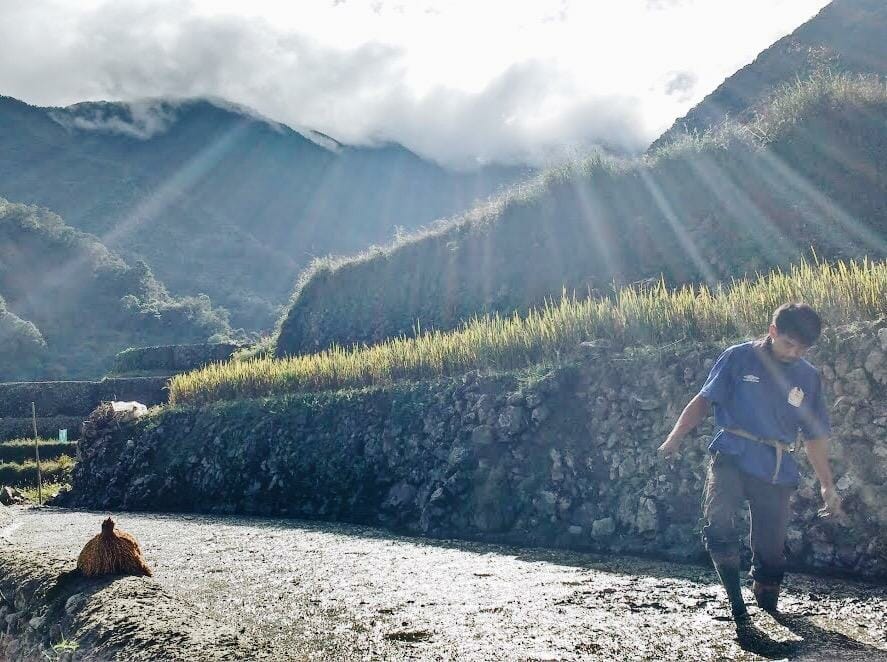
As we arrived early and we weren’t scheduled to start our trek till the next day, we decided to rest up and then head over to the Hapao Rice Terraces and Hot Springs (you’ll need about 5 hours for this). For the two of us including a guide and transportation, this set us back 1540 PHP ($30 USD).
We were extremely fortunate to have a local guide whose name was Joseph. He was very informative about the mechanics of the rice terraces, its construction, the various traditions of the locals and he was also kind enough to take us to meet his relations as well as giving us some local fruit to munch on.
And of course, the hot water springs were nice and were a great way to relax after enduring the long bus ride and flight from cold Korea. If you can ask for Joseph through Bea, I would whole-heartedly recommend doing so – he was hands-down the best guide I have ever had the pleasure of meeting in the Philippines.
The next day our three-day trek was finally ready to begin. Being apprehensive about the weather which was forecasted to be cloudy and rainy, we were pleasantly surprised to be greeted with warm sunshine and semi-clear skies.

Our trek was a three-day journey starting near Pula Village, staying overnight in Cambulo and then arriving in Batad where we would stay the second night. Costing 5600 PHP ($110 USD) for both of us, this included a guide, two nights’ accommodation and heritage fees.
There are other options for a two-day hike, or a more serious four-day hike which involves camping and hiking some of the adjoining mountains. All of these options can either be pre-booked or arranged when you are in Banaue.
Some additional travel pointers:
- The peak season for trekking is from January to April, with the rainy season beginning in May and finishing in October/November.
- Harvesting for most of the rice beds takes place in April, therefore it is at its prettiest and greenest at this time.
- There is also a local festival in the last week of April, so if you have the chance and can book ahead, it may present the best time for your visit.
- It’s worthwhile taking some snacks and water for the trip, but you’ll also have ample opportunity to replenish your supplies on the trail.
Our three-day trek consisted of a tough first day covering around 20 kilometers (about 12.5 miles) and lasting almost 9 hours. We were slowed considerably by the extensive mud caking the path, but this did not dampen the amazing views or the excitement that accompanied our walk.
We arrived in Cambulo just before sunset, where we enjoyed a couple of well-earned drinks and an amazing massage (cost: 350 PHP or $7 USD).
Our second day was a much easier stroll, taking around 2-3 hours to Batad, the famous rice terrace amphitheater, a sight that adorns most of the local postcards. This magnificent area is best viewed from the edges of the terraces, which enables a wide landscape view of the village and the surrounding mountains.
During the afternoon, we hopped down to Tappiyah falls for a cool swim, but beware, it’s quite a steep walk, and if you head down, obviously you gotta come back up! I recommend breakfast at the Hillside Inn, not for the food, but for the views which are absolutely gorgeous. I wouldn’t mind waking up to that any day of the week!

We finished up our third day with a light-to-medium hike of around 3 hours, after which we headed back to Banaue. Spending the night in Banaue, we stumbled across a nice little French restaurant, Le Bistro.
A newly opened place owned by a French and Filipino couple (she met him while he was her guide!), it has nice food and cocktails – a perfect remedy for those sore muscles! We also treated ourselves to a massage at Core Health Spa located on the second floor of the Commercial Building in the town centre (cost: 350 PHP / $7 USD).

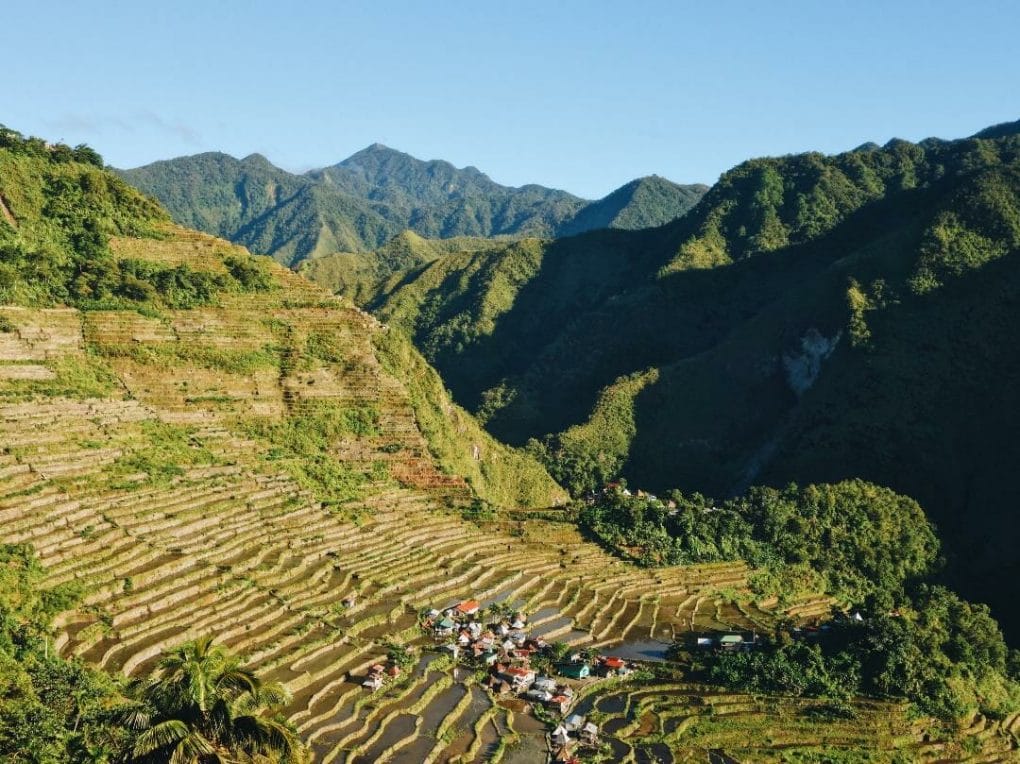
Our next stop – Paniqui.
Our next leg took us to Paniqui via Baguio. This was due to spending some time with my Filipino family and also for my fiancé and her parents (who flew from the UK) to meet the Pinoy family. We spent four days in Paniqui, which culminated on the Saturday where forty of my relatives joined us for a day of games, food, karaoke and fun!
Obviously, most of you won’t take this route – most people either head up north to Sagada to check out the hanging coffins or head back to Manila. Buses can be booked at Banaue.
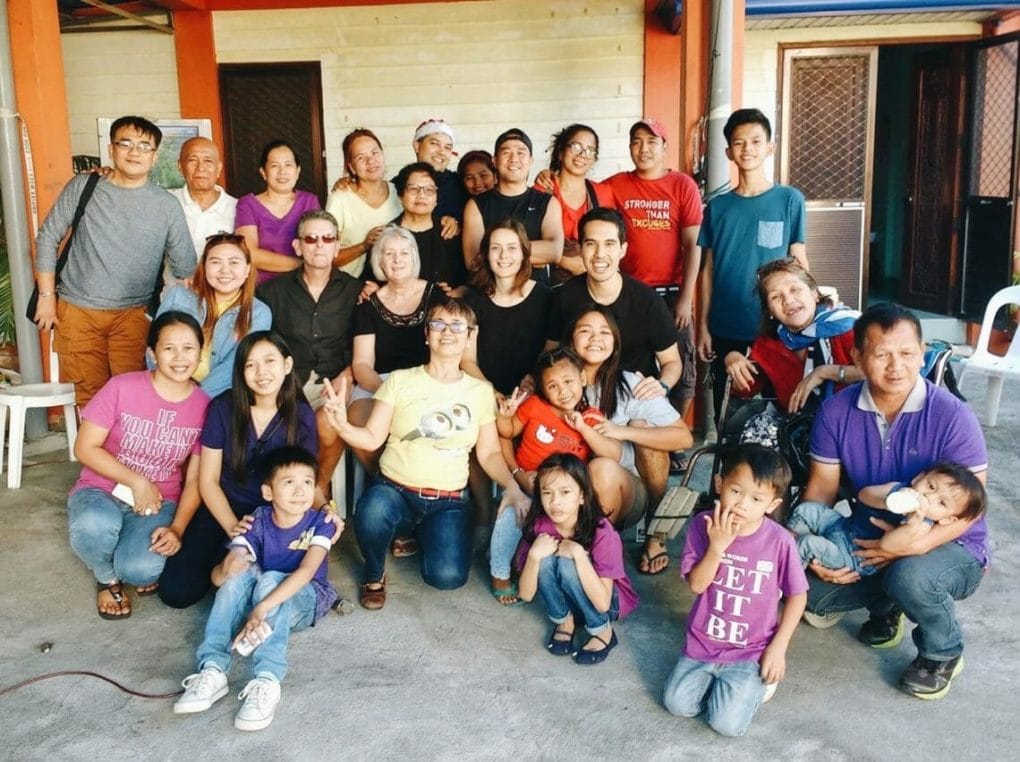
A visit to Palawan – Calitang Beach.
Our second part of our trip took us to Palawan, about a 75 minute flight from Clark Airport, north of Manila. The island has two main airports, and we arrived in El Nido before travelling 40 minutes to Calitang Beach. Away from the hustle and bustle of El Nido, it adjoins the better-known Nacpan Beach. We stayed here for 4 nights, and despite the overcast skies we had a very enjoyable time.
Some pointers:
- We stayed at Calitang Beach Resort, which is right on the water. We booked on Airbnb, where the resort has rave reviews. If possible, it would be best booking a room upstairs. It can be a little noisy and stuffy in the main accommodation areas.
- A tricycle to El Nido from Calitang Beach should cost around 500 PHP (haggle away!). The hotel can arrange a transfer to/from the airport and El Nido for 600 PHP ($12 USD)
- You can arrange island hopping directly from the beach. We had a 6-person tour (plus 4 crew), which took in the best of Tours A & C. Costing 1800 PHP per person ($35 USD), it included transportation, lunch and drinks. We paid 500 PHP for a canoe at the small lagoon.
- There is an amazing eatery called Victoria’s restaurant, which I whole-heartedly recommend. Having been brought up on Filipino food, I can honestly say that it is just as good as my Mum’s! Be warned, it’s only a small place and being home-cooked, it takes 60-90 minutes for the food to arrive. But you won’t be disappointed! A bottle of the famous Tanduay rum costs 80 PHP($1.50 USD).
- We hoped to rent a scooter when we were there, but due to small supply, we were out of luck.
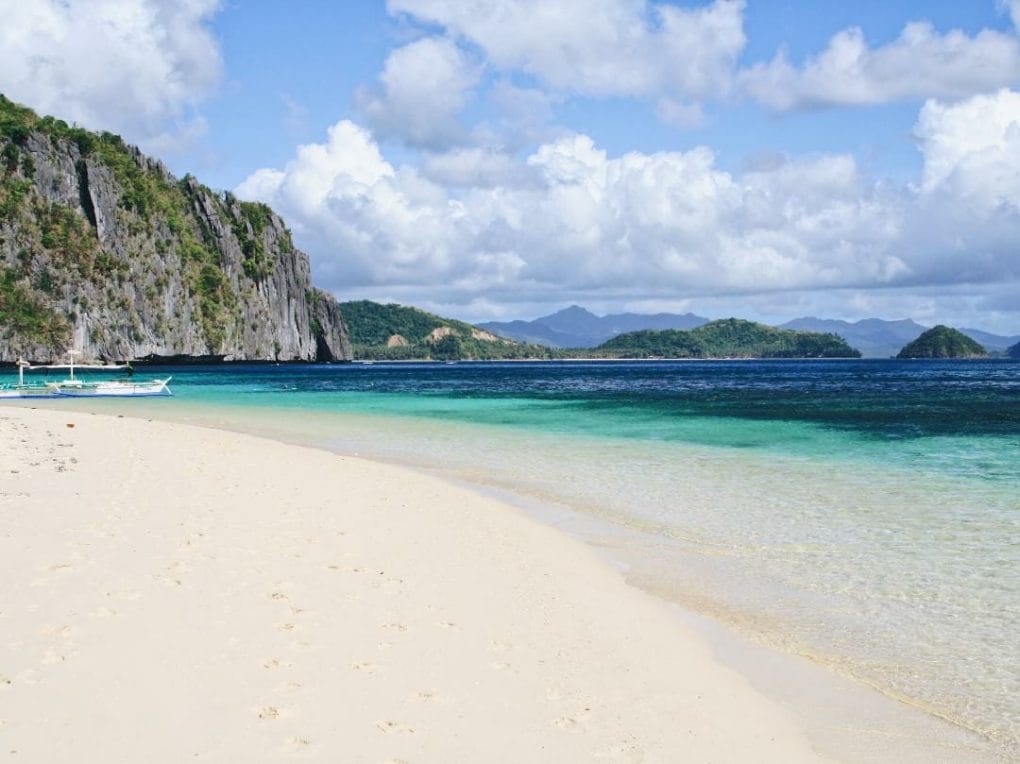
A few nights in Part Barton.
After finishing up in Calitang Beach, we ventured south towards Port Barton. Returning after almost 7 years since my last trip, I was amazed at the level of development and progress that the town has undergone. My last visit I saw only one other solitary backpacker, whereas now the place is full of hip restaurants and tourist operators.
However we didn’t stay in town this time, we booked accommodation at Thelma and Toby’s Palawan camping – or rather, glamping. We weren’t disappointed. It’s reached by a 25 minute boat-ride from the pier and has 8 tents, all metres from the sand.
We spent four days relaxing on the beach, drinking some cheap cocktails and eating some delicious food. Priced at 1600 PHP ($31 USD) per person per night, you can also avail yourself of the kayaks and paddle boards for free. You can also take part in the spontaneous volleyball games before dinner. There’s also a waterfall nearby if you wish to go for a bit of a wander.
The facilities are clean with meals taken in the communal dining area, which is a perfect spot to meet other travelers. Probably best suited to couples or groups of friends, we had an absolute blast. We hope to return sooner rather than later.
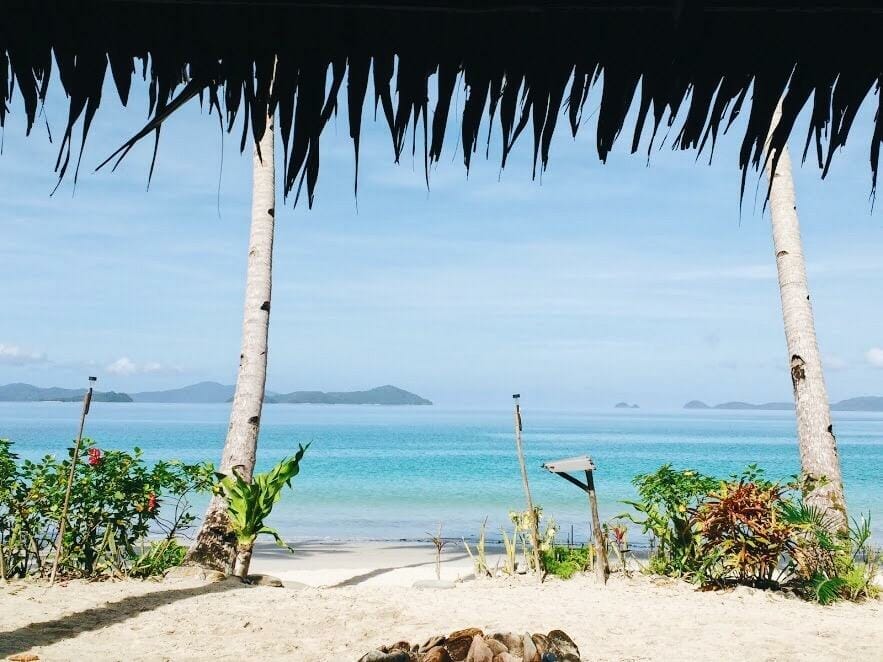
Our last stop – Puerto Princesca.
As our two-week adventure came to an end, we left for Puerto Princesca. We stayed overnight in Subli Guest Cabins – booked through Airbnb. Unfortunately struck down by a traveler’s bug, our sore bodies had to withstand some “extra challenges” thrown in our way.
We endured a blown tire, delayed flights, and an uncomfortable overnight sleep in Incheon airport. To top it off, we arrived to find construction had started on a new shop underneath our apartment. But at least we arrived home ALIVE!
Any questions, hit me up on the comments section below. I’m always happy to help travelers explore my home-away-from-home.
Author
Jeremy is a dear friend, originally from Australia. He has spent extended time on the road, covering a number of far-flung destinations such as Peru, Bangladesh and South Korea. One of the places that holds a special place in his heart is the land of his mother’s birth, the Philippines. Having contributed to music magazines and economic blogs, this is his first foray into travel reporting and I hope you like it!

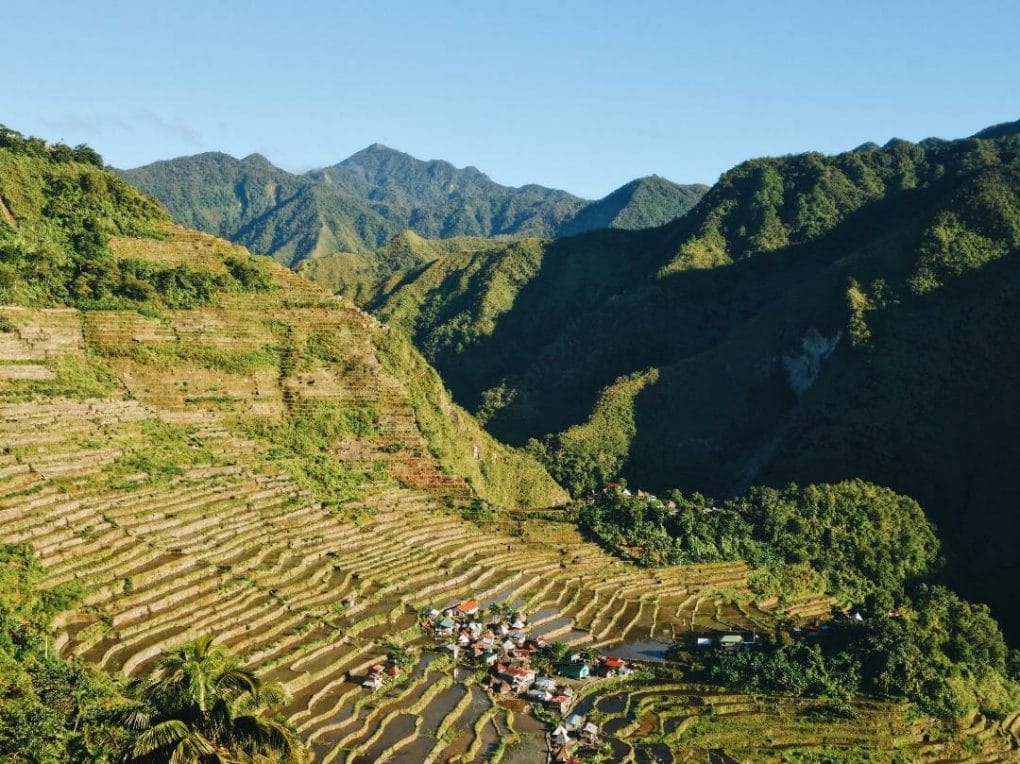
Jeremy this is so cool! It’s such an off-the-beaten-track itinerary that I’d love to try!!! I’ve shared this with a friend who is planning to go next month! I will def come back to this for my second visit!
Thanks Kim! I’m sure you’ll have your own awesome tips to give as well!
Great post! Looking forward to one day planning a trip to the Philippines with these beautiful locations in mind, and seeking out more information/tips when the time comes!
Thanks Monika! Hit me up if you have any questions – I’d love to help!
So awesome! I’ll totally refer to this whenever I plan to go to the Philippines 🙂 thanks so much for the insider info, Jeremy!
Thanks Kelli! I’m sure you’ll be there sooner rather than later!
Thanks for sharing this and for giving so much detail Jeremy! If I ever make it back to the Philippines I’d love to go visit the rice terraces and then island hop in El Nido.
Thanks Kio cuts. Hopefully your next trip is longer (and more successful) than the first one!
I have to say that the beaches in the Philippines is considered as the most stunning in Southeast Asia, but the rice terraced fields make me disappointed a little. It can’t be as gorgeous as the scenery in Mu Cang Chai of Vietnam or Yunnan of China. Anyways, thanks so much for your sharing!
The beaches are quite stunning!! Thanks for sharing ????
You may be right TVT. Purely from an Instagram point of view, those places may sparkle brighter, but if you’re looking for something more than just a photo, the Philippines may suit you more. I may be biased of course(!), but having just spent a month in Vietnam, I found the people not as friendly, and appeared a little jaded from tourism. This is to be expected from having a much more developed tourism market for a much longer period, and also having double the number of international tourists. Nonetheless, both are beautiful countries, and each city, town or mountain is what you make of it!
Thanks JW for the insightful response! You have an interesting perspective.
Hi Brit. My boyfriend and I are planning a trip to The Phillipines in November. We have 15 nights altogether. We aren’t interested in seeing the Chocolate hill/rice fields and are really going to beach hop/island hop. We are struggling to come up with a route as we feel like we are moving around too much and trying to cram in too many things. We have short listed the following places; Boracay, El Nido, Coron, Cebu – Oslob/ Moalboal/ Bohol/ Kawasan Falls. We really have no idea which places to cut out and ideally don’t want to only be staying in one place for one night and then having to move on constantly. We are looking at flying between the main islands but would like to know what you suggest for the quickest but most economic way of moving between places within the islands. Do you have any suggestions please?
Hi Chloe!! This was my biggest struggle too. After taking the route i did and then chatting with other travelers and friends who visited other places, if i went back again I’d personally prioritize El Nido, Coron, and Siargao (less crowded, quiet, surf island). Boracay is a great beach party destination if that interests you, but means it can be crowded and loud. Bohol isn’t beach but just pretty nature to explore on moped and could be done in a day. Cebu / Moalboal (i didn’t go all the way to Oslob) is a great starting point to get around this part of the islands and to see the falls but i was more impressed with the nature around El Nido and Coron. It’s really tough to choose though because all are so stunning!! But ultimately it depends on your interests and top priorities. I don’t recommend more than 4 destinations though if you’re trying to chill. the quickest way to get between the islands will be flying or ferry depending on the route which can eat up valuable time. If you can fly over taking the ferry, it’ll be quicker and more predictable (ferries can sometimes be cancelled due to rough water) but a bit more expensive. Good luck with planning!! I hope this helps!